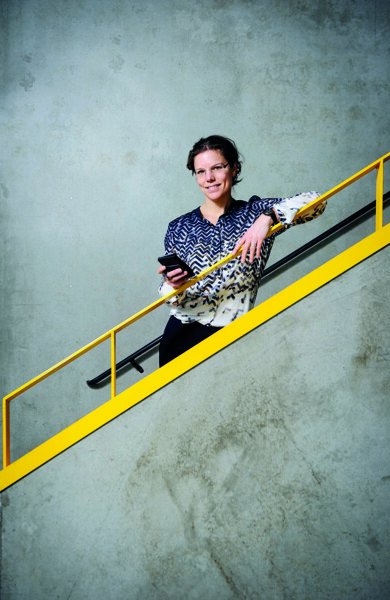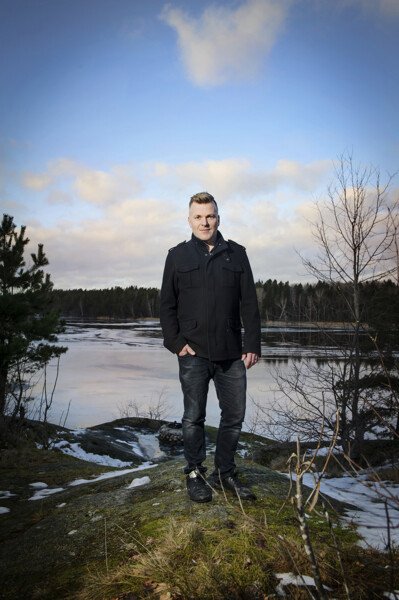Three researchers on stress management: They know how to relax
The work of a researcher is often associated with a stressful professional life. But does it get any easier when one’s research field is stress itself? Three researchers share their knowledge – and their own tricks of the trade.


Text: Maja Lundbäck, first published in the Swedish magazine Medicinsk Vetenskap no 1 2018.
“Don’t check your emails on your phone”
Kristina Palm
Title: Researcher at Karolinska Institutet’s Department of Learning, Informatics, Management and Ethics.
Conducts research into: How employees deal with the challenges and opportunities of digital working.
“Recovery is important but how it takes place varies. Some people are separators; choosing to divide work and home in both time and space, because this increases their wellbeing. Others are integrators; they are more willing to allow work into their private lives and vice versa.
I am the project manager for the research study Vägar till ett hållbart digitalt arbetsliv (Routes to a sustainable digital working life), during the first stage of which we have studied borderless working via activity diaries. Most people are comfortable with individual activities that cross the border, such as checking work emails. The mere fact of taking the job home with you does not automatically create ill health. One group of people who might be at greater risk of stress-related ill health than others are those who attempt to separate work from their private life, but without success.
Personally, I have long been a categoric separator. I don’t randomly check work emails during the evening or weekends, as I don’t like it when my private life and work cohabit. When I became a manager five years ago, I noticed that emails could arrive on a Friday evening that had a detrimental effect on me. I have now altered the settings on my phone so that it I have to press a large number of buttons to check my work email. Still, due to the sheer volume of work I have created specific occasions on which I work from home. If I do take work home, I decide on specific times between which I can work, creating mental boxes for what is and isn’t work.
Sometimes I also need a good thriller to read on the commute, so that I don’t have to think about work.”

“Many healthier using guided self-help”
Sigrid Salomonsson
Title: Doctoral student at Karolinska Institutet’s Department of Clinical Neuroscience and psychologist at Gustavsberg Health Centre.
Conducts research into: Evidence-based measures against mental illness in primary healthcare.
“As a psychologist working at a local health centre, I meet many patients suffering from anxiety, depression and stress-related ill health. Long-term stress without sufficient recovery time can be wearing and lead to negative consequences. Physiologically, both anxiety and stress are methods for the body to deal with sudden threats. However, the dangers we face today, such as problems at work and worry for our children, are seldom short-term but rather can continuously wear us down mentally. I myself suffer from stress when problems arise at work or in my free time. I will soon be defending my thesis and that makes me slightly nervous, although I’m careful to maintain a balance in life, finding time for exercise, meditation, yoga and quality sleep. In stressful situations, it is even more important to take care of yourself.
Mental and physical health are equally important, but access to evidence-based mental healthcare is extremely flawed. To increase access to cognitive behavioural therapy (CBT), in my research I have developed a resource-saving model known as step-by-step care. I followed 400 patients who were undergoing treatment for anxiety, depression, stress or sleep disorders. Approximately 40% were healthy after step one, during which they received guided self-help through two appointments with a psychologist. This demonstrates that many people are capable of managing a large amount of their treatment themselves. Those who were not cured were randomly assigned to weekly appointments with a psychologist or continued self-help. In this phase, twice as many of those undergoing intensive treatment were cured compared to those who continued with self-help. In total, as many people were cured with step-by-step care as with conventional evidence-based treatment – although at the cost of half of the resources.”

“Life transitions demand energy”
Fredrik Livheim
Title: Psychologist and doctoral student at Karolinska Institutet’s Department of Clinical Neuroscience.
Conducts research into: Effects of group ACT on stress and mental illness.
“Major life transitions are a source of stress to all of us, not only the negative ones but even positive changes that we may have been longing for. I myself am currently going through a major life transition, namely from research to nine months of parental leave. The transition in itself demands a great deal of one’s energy and it is simultaneously scary and wonderful.
In my job as a psychologist, I want to help as many people as possible as efficiently as possible, making group therapy a useful format. In my research, I have seen how treating groups using acceptance and commitment therapy (ACT) can reduce stress and mental illness. ACT is a form of cognitive behavioural therapy that focuses on helping the individual to live a rich and rewarding life despite problems and challenges. An important component of ACT, many people associate acceptance with giving up, whereas it is actually about training oneself to distinguish between what you, as an individual, can influence and what lies beyond your control. Learning to accept what has happened and what you cannot influence is an effective way of reducing unnecessary stress.
Having developed a treatment manual for how ACT can be used to reduce stress and stress-related mental illness, I then trained 1,400 psychologists and counsellors, who in turn hold courses based on the manual. During one of my studies, young people in compulsory care at five treatment centres underwent ACT as a tool for relating to difficult thoughts and feelings; resulting in reduced levels of depression, anxiety, anger and problems with fellow detainees and improved self-image. The Swedish National Board of Institutional Care now wants to offer ACT at all of their institutions for young people.”
